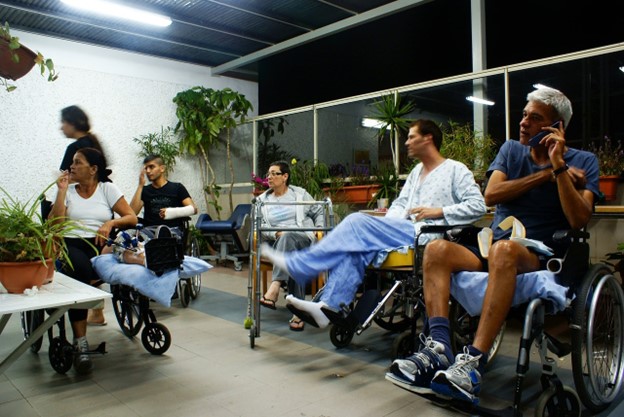Living with a long-term disability poses various challenges, some obvious and others not so much. While society has made significant strides in promoting awareness about disabilities, there’s still a long way to go when it comes to establishing genuinely inclusive environments. Accessible living isn’t just about having ramps or larger bathroom stalls; it extends to societal attitudes, workplace policies, and even the intricacies of online spaces.
Here are some ways to promote accessibility and inclusion for individuals living with long-term disabilities.
1. Knowledge Is Power: Legal Rights And Advocacy
If you’re living with a long-term disability or are a caregiver, understanding the legal landscape is crucial. There are various laws and regulations, such as the Americans with Disabilities Act (ADA), that provide protection against discrimination based on disability.
A long term disability attorney can guide you through these complexities, ensuring that you’re aware of your rights and can advocate for yourself. Knowing your legal rights can not only provide you with peace of mind but also help you navigate the systems designed to assist you better.
The more we educate ourselves and the public about these laws, the more we help create an inclusive society.
2. Adapted Physical Infrastructure
Public spaces must be designed to accommodate everyone, including those with long-term disabilities. This extends beyond just installing ramps or elevators.
Consideration must also be given to lighting for those with visual impairments, tactile flooring for navigation, and signages that are easy to read and understand. Local governments and community organizations must collaborate to create truly accessible spaces.
3. Digital Accessibility
As the world becomes increasingly digitized, it’s crucial that online spaces are equally accessible. Web developers and designers should follow the Web Content Accessibility Guidelines (WCAG) to ensure their sites can be navigated by those with various disabilities.
This includes things like text-to-speech capabilities, easy-to-read fonts, and keyboard navigation. Apps and software should also be designed with accessibility in mind to ensure that everyone can participate in the digital world.
4. Inclusive Hiring Practices
Workplaces can also play a pivotal role in promoting inclusivity. Employers should have clear policies to ensure that individuals with long-term disabilities have an equal opportunity in the hiring process.
Job descriptions must be written clearly to specify only the essential functions of the job, so as not to discourage potential applicants. Workplaces should also offer flexibility, both in terms of working hours and work locations, to accommodate different needs.
5. Community Engagement And Social Inclusion
Physical and digital accessibility are important, but so is the social aspect.
People with long-term disabilities often face social isolation due to limited opportunities for community engagement. Creating accessible events, workshops, and social gatherings can significantly impact the well-being of those with long-term disabilities. From accessible venues to captioned performances and beyond, there’s a wealth of opportunities to promote social inclusion.
6. Mental Health Support
It’s essential to address the mental health implications of living with a long-term disability. Beyond the physical limitations, the emotional and psychological toll can be significant. Providing accessible mental health services, including counseling and support groups tailored to those with long-term disabilities, is crucial for holistic well-being.
7. Education And Awareness
One of the most potent ways to promote accessibility and inclusion is through education and raising awareness.
Unfortunately, many people are still unaware of the unique challenges faced by those living with long-term disabilities, which leads to unintentional exclusion and discrimination. Schools and educational institutions can play a vital role here by incorporating inclusivity training and disability awareness into their curriculums.
This education should extend into adulthood, with corporations offering training programs that educate their employees about diversity, inclusion, and the specific needs of those with long-term disabilities.
The aim should be to foster a mindset of empathy and understanding, so people become advocates for inclusion in every aspect of life—be it ensuring an accessible design in a community project or simply being more mindful of the language we use when discussing disability.
Conclusion
Creating a society that promotes accessibility and inclusion for individuals with long-term disabilities is not just the responsibility of one group or institution. It’s a collective effort that requires the active participation of everyone—governments, employers, communities, and individuals alike.
Whether it’s through seeking guidance from professionals, creating more accessible public and digital spaces, or fostering a culture of inclusivity in our workplaces and communities, every step counts. By committing to these initiatives, we move closer to a society where everyone, regardless of their physical or cognitive abilities, can live a fulfilling life.
Read Also
- Why comprehensive health insurance with maternity is beneficial in the UAEWelcoming a child is a significant milestone in any family’s journey. As exciting as this chapter is, it also brings with it a fair share of responsibilities—especially when it comes to planning for healthcare costs. Health insurance is now mandatory in the UAE, but as with any type of insurance, the smallest requirement might not… Read more: Why comprehensive health insurance with maternity is beneficial in the UAE
- Modern Approaches to Adolescent Mental Health Treatment for Lasting RecoveryWith increasing numbers of teens experiencing emotional and behavioral health concerns, adolescent mental health treatment has become more essential than ever. Conditions such as anxiety, depression, trauma and mood instability are on the rise, and effective support must evolve with these growing needs. Today’s treatment models blend evidence-based therapy with flexible access and holistic care, giving… Read more: Modern Approaches to Adolescent Mental Health Treatment for Lasting Recovery
- How to Find a 5-Star Dentist Near YouChoosing a dentist is more than just finding someone who can clean your teeth. It’s about selecting a trusted partner in your long-term oral health. A 5-star dentist not only provides excellent clinical care but also delivers a positive patient experience, from the moment you walk in until the moment you leave. Whether you’re new… Read more: How to Find a 5-Star Dentist Near You
- Your Easy-Peasy Guide to Brewing Amazing MatchaHey there! So, you’ve heard all the buzz about matcha – that vibrant green powder that’s not just pretty but packed with good stuff? It can seem a little fancy and intimidating at first, but trust me, making a delicious cup at home is simpler than you think. Forget complicated ceremonies for now; let’s just… Read more: Your Easy-Peasy Guide to Brewing Amazing Matcha
- Embracing Holistic Wellness: Insights from a Lansing, MI Health CenterReframing Health: Moving Beyond Symptom Management Treating only symptoms often offers quick relief, yet long-term results stay out of reach. When care zeroes in on isolated complaints, the bigger picture, such as stress, behavior, or lifestyle, often gets missed. Research shows that whole-person care, which looks at physical, emotional, and environmental factors, yields better outcomes… Read more: Embracing Holistic Wellness: Insights from a Lansing, MI Health Center






